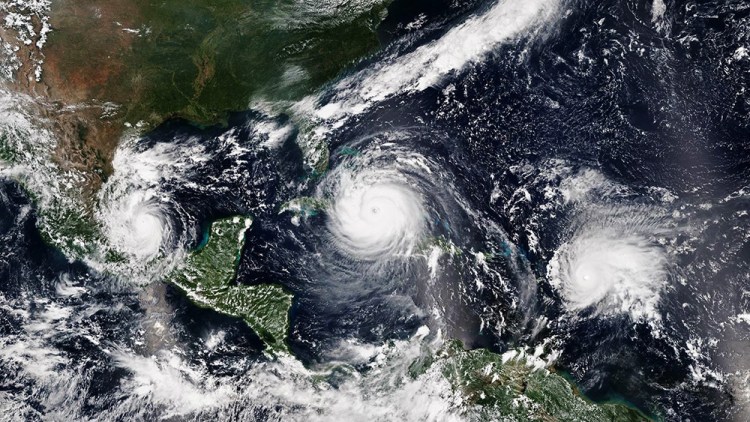After a record-breaking and destructive hurricane season in 2017, the next one looks closer to “normal” or slightly above normal. This is what the National Oceanic and Atmospheric Administration said on Thursday morning, citing a burgeoning weak El Niño and near-average sea surface temperatures, which is expected to make conditions a little more hostile for hurricane formation than in 2017.
Last year, 17 named storms developed in the Atlantic, and 10 of those went on to become hurricanes. It was the most active and destructive hurricane season since 2005.
In 2018, NOAA is calling for:
• 10-16 named storms
• 5-9 hurricanes
• 1-4 major hurricanes (category 3 or stronger)
The average number of named storms is 12, with six reaching hurricane status and three becoming major hurricanes.
“There are no climate signals that suggest this season will be extremely active like last season, or extremely weak,” said Gerry Bell, the lead seasonal hurricane forecaster for NOAA at a press conference on Thursday.
Bell also noted that it’s impossible at this point to determine which parts of the Atlantic will be the most active, offering little comfort to the regions that were hit hard in 2017, such as Puerto Rico and the Gulf Coast.
Colorado State University, which has generated annual hurricane outlooks since 1984, thinks the season will be slightly more active than normal. In its outlook released in early April, the school’s hurricane research group predicted 14 named storms, seven hurricanes and three major hurricanes.
“As is typically the case with early seasonal outlooks, the primary area of uncertainty lies in whether El Niño develops,” Phil Klotzbach, the group’s lead researcher, wrote in April. “Should a significant El Niño develop, Atlantic seasonal hurricane forecasts would likely be reduced. Alternatively, should the tropical Pacific have neutral conditions and the Atlantic were to markedly warm, seasonal forecasts would likely increase.”
Neither group is calling for a season as active as 2017, but it can never be ruled out.
From Franklin to Ophelia, 10 consecutive hurricanes developed in just 10 weeks in 2017, tying a record for most hurricanes in a row. The last time that happened was back in 1893 – there is no modern record of such a rapid succession of hurricanes. With significant landfalls from Harvey, Irma and Mari, the season did around $215 billion in damage, according to estimates by Munich Re, and killed hundreds if not thousands of people.
The 2017 hurricane season was the costliest on record, surpassing 2005 when Katrina, Rita and Wilma made landfall in the U.S.
Hurricane season, which usually starts around June 1, could begin early this year. A cluster of clouds and thunderstorms near the Yucatan Peninsula is tracking toward the Gulf Coast. Forecasters at the National Hurricane Center are giving it a 40 percent chance of development in the next 48 hours, and an 80 percent chance in the next five days. If it does spin up into a tropical storm, its name would be Alberto. The last time Alberto was on the hurricane-name list was 2012, and it also formed in May.
Send questions/comments to the editors.



Success. Please wait for the page to reload. If the page does not reload within 5 seconds, please refresh the page.
Enter your email and password to access comments.
Hi, to comment on stories you must . This profile is in addition to your subscription and website login.
Already have a commenting profile? .
Invalid username/password.
Please check your email to confirm and complete your registration.
Only subscribers are eligible to post comments. Please subscribe or login first for digital access. Here’s why.
Use the form below to reset your password. When you've submitted your account email, we will send an email with a reset code.